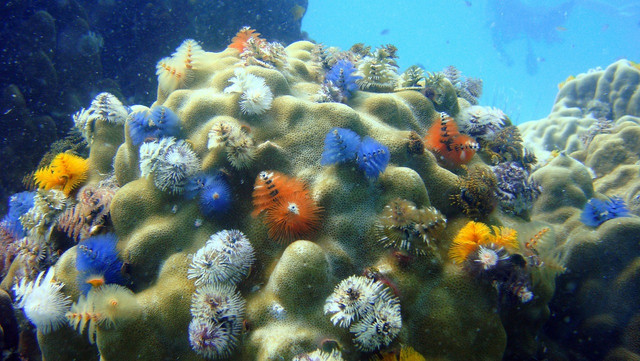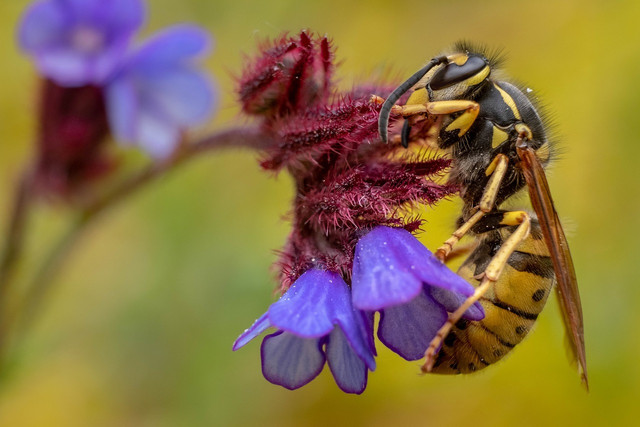The so-called 'two halves' of an ecosystem, biotic and abiotic factors work together to ensure a balanced, vibrant and thriving natural environment. Here we outline what biotic and abiotic factors are and how they are closely connected.
Biotic and abiotic factors are what make up our surrounding natural world.
- Biotic factors are living things within an ecosystem. These include humans, plants, fungi, animals and microorganisms including bacteria.
- Abiotic factors on the other hand, are non-living components of an ecosystem such as water, temperature, sunlight, nutrients, soil and the atmosphere itself.
The way these components interact is ever-changing and critical in an ecosystem as living organisms require both biotic and abiotic factors to survive. A deficit or abundance of either component can limit other factors within an ecosystem and influence an organism’s health and long-term survival. To understand what exactly an ecosystem is, read about forests as ecosystems and the vital role of the tropical rain forest ecosystems for the planet.
Biotic Factors Explained

(Foto: CC0 / Pixabay / vjacob1)
Biotic factors include any living component within an ecosystem. These living components fall into one of the three following categories:
Producers
Producers or autotrophs (i.e. plants, algae, plankton and bacteria) convert abiotic factors into food. The most common pathway is photosynthesis, through which carbon dioxide, water, and energy from sunlight are used to produce glucose and oxygen. Plants are a prime example of these producers.
Consumers
Consumers or heterotrophs obtain energy from producers or other consumers. Most consumers are animals. Some basic examples of what consumers are include cattle, wolves and of course human beings.
Consumers may be further classified as to whether
- they feed only on producers (herbivores),
- only on other consumers (carnivores),
- or a mixture of producers and consumers (omnivores).
Cattle as we know are herbivores, wolves are an example of carnivores and humans are typically omnivores in terms of their diet.
Decomposers
Decomposers break down the chemicals made by producers and consumers into simpler molecules. The products made by decomposers may then be used by producers. Fungi, earthworms and some bacteria act as these decomposers in an ecosystem.
Abiotic Factors: Definition



(Foto: CC0 / Pixabay / Atlantios)
Abiotic factors are defined as the nonliving components of an ecosystem that an organism or population needs for growth, maintenance, and reproduction. Examples of abiotic factors include:
Water
Water is essential for all life. In ecosystems where water is scarce, organisms will develop traits and behaviors that help them survive by harvesting and storing water more efficiently, sometimes this goes on to create a water source for other species as well. In ecosystems like rainforests where the abundance of water depletes soil nutrients, many plants have developed special traits, allowing them to draw up vital nutrients from the soil before water washes them away. Water carries a host of nutrients, gases and raw food sources that aquatic and marine species depend on.
Oxygen
Oxygen is essential to the majority of life forms on Earth, as they need oxygen in order to breathe and to release energy from food and through this process, oxygen drives the metabolism of most organisms on the planet.
Temperature
Temperatures and the extremes of temperature in both air and water are so vital to how organisms survive and thrive in an ecosystem. Temperature can also act negatively or positively on an organism’s metabolism, with countless species evolving over time to become perfectly accustomed to the typical temperature range in their native ecosystem.
Wind
Wind exerts many effects on an ecosystem as it moves other abiotic factors such as soil and even water. It helps in the dispersal of seeds and can help fuel forest fires. Wind affects temperatures and acts on the evaporation process of soil, surface waters and plants, which can alter humidity levels.
Sunlight
The sun acts as the Earth’s largest and most important source of energy. The light from the sun plays an essential role in most ecosystems, providing the energy that plants use to produce food, and it of course affects temperature. Organisms have adapted their physiology depending on how much access they have to sunlight, in order to ensure their survival.
Ocean currents
Ocean currents around the world facilitate the movements of biotic and abiotic factors like organisms and nutrients. They also affect water temperature and climate, which in turn play an important role in the survival and behavior of organisms that live in water. Ocean currents can influence factors such food availability or scarcity, reproductive behaviors of marine organisms and species migration.
Nutrients
Soil and water contain inorganic nutrients that organisms rely upon to eat and grow. Minerals like phosphorus, potassium and nitrogen found in soils are the building blocks needed to ensure healthy plant growth. Water contains many dissolved nutrients — often from soil runoff — and can carry these nutrients further into aquatic and marine environments where they play an important role in the survival of native organisms in those ecosystems.
Read more:
- Human Environment Interaction: Definition & Examples
- Planetary Health: What Is the Planetary Health Diet?
- Native Gardening for Wildlife: Benefits and Tips for Beginners
Do you like this post?







